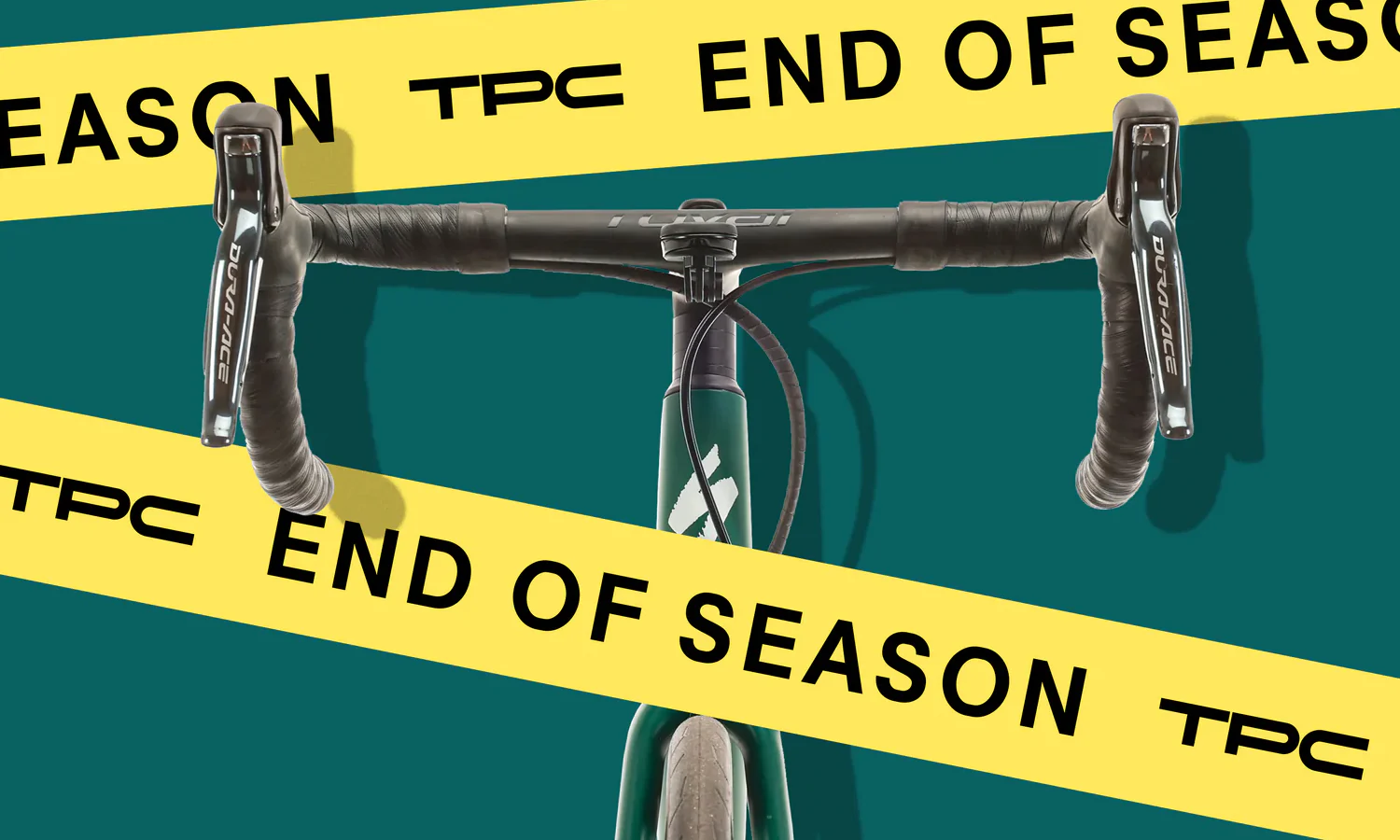Got aero? Both TT and triathlon bikes are made to go fast and cut through the wind. At first glance, time trial and triathlon bikes look pretty similar. Heck, even on second glance you might be hard-pressed to pick one over the other. But when it comes to geometry and fit, they can actually feel quite different.
Also, TT bikes adhere to strict guidelines from the Union Cycliste Internationale (UCI) — the worldwide governing body for cycling. The UCI rulebook dictates everything from tube width to aero bar length to seat position. In triathlon racing, athletes don’t adhere to UCI rules; although aerodynamics remains very important, tri bikes designers can get really creative with design.
So when you see time trial races in the Tour de France, you know that all riders are following the same set of rules. And, when you see the Ironman World Championship in Kona, Hawaii, you know that each rider chose their specific bike to fit them as uniquely as possible.
Can you spot the differences between a Canyon Speedmax triathlon bike and a Canyon Speedmax time trial bike?
What is a time trial bike?
A time trial bike (also called a TT bike) is an aerodynamic bicycle made for racing against the clock, often on a straight, flat course. TT bikes put aerodynamics above all else. Basically, time trial bikes use as much science as possible to go as fast as possible — every gram is accounted for, every angle on every surface is thought out in terms of aerodynamics. Time trial races can vary in length, but at the highest level, they rarely exceed an hour.
What is a triathlon bike?
Triathlon bikes (also called tri bikes) are made specifically for triathlon racing where the bike leg can be anywhere from 12 miles to 112 miles. Compared to TT bikes, there’s no rulebook for tri bikes — they can be designed in any way that will make an athlete faster, and are aimed to give a little more comfort. This leads to some radical frame shapes and geometry trends. For example, tri bikes often have a steeper seat tube angle, pushing the hips forward on the ride and saving the hamstrings for the run portion of the race. With the seat tube closer to vertical, the rider's hips are over the crankset, which engages the quadriceps for power
Why are there special bikes for triathlons?
Why not use a TT bike in a triathlon? You could, but you might get pretty uncomfortable on a longer course. Both types of bikes include design features specific to aerodynamic efficiency, but a tri bike is designed for comfort over hours of riding, and its fit helps preserve leg muscles for the run. Both kinds of bikes have aero bars handlebars to allow a rider to stretch their arms out and get into a position that reduces wind resistance. But a tri bike’s aero bar position isn’t as aggressive, keeping the back and core more comfortable than all-out TT position. A triathlon bike’s frame design also allows for nutrition and hydration to be stored in the bike, for quick and easy access.
Read about the dos and don'ts of buying a triathlon bike.

No rulebook is holding back triathlon bike designers. Follow your dreams, you aero experts!
What is the difference between a time trial bike and a triathlon bike?
Frame geometry
UCI rules regulate many of the measurements for a TT bike; such as, the nose of the seat must be at least 50mm back from the bottom bracket. But beyond the strict rules, both TT and triathlon bikes tend to have a shorter wheelbase to put the rider closer to the front of the bike, short head tubes and low stack height. Both also tend to run shorter cranks. Shortening a crank results in power gains and better aerodynamics.
Seat tube angle
For both a TT bike and a triathlon bike, the seat angle should be more than 76-degrees. A steep tube seat angle is what allows the legs and hips to function well while the arms are in the aero bars. The degree of the angle depends on each person’s body and the kind of race they’re riding in.
Bike fit
Generally, on TT bikes, aerodynamics reigns over comfort. In a time trial, a cyclist wants to go as fast as possible, even if that means contorting their bodies a bit. For that reason, the position is as tucked as possible with low bars and long reach from saddle to bars. But in triathlon, where races can be very long, comfort is a bigger factor. Riders’ positions will be less tucked and a bit more relaxed. On a tri bike, arms are usually farther apart in the aero bars on a tri bike, and the seat tube is usually farther forward.
Where aero position (arms out in the aero bars) is most important, base bar and brake location shouldn’t be overlooked in terms of fit. In general, when fitting a TT or tri bike, you want to consider all points of contact: right and left pedals, the saddle, the forearms, right and left extensions (when in aero position), and right and left hands on the base bars.
This Specialized Shiv is a good example of the more upright handlebar position found on many triathlon bikes.
Riding position
TT and tri riding positions are very similar. For both, a rider wants to reduce the surface area that’s exposed to the wind. Imagine a wind tunnel — a rider wants as little resistance as possible while maintaining maximum watts. In TT, this position is more exaggerated than on a tri bike, especially if the triathlon is quite long. For both, the cyclist wants to get low in the front. A short head tube allows the chest to come down. Some even recommend riding an overall smaller frame TT bike in order to get a lower elbow height, and thus lower shoulder height.
Brake technology
With so much attention put on going fast and staying aero, brakes might not even seem important. And while it’s true that time trial races tend to be straight and flat, triathlons can have a little bit of everything — climbing, descending, and sharp turns. Many tri bikes are switching from rim brakes to disc brakes for more control in varying conditions. And because cabling can be hidden, disc brakes can make the whole bike more aerodynamic. The Quintana Roo PR series features disc brakes because they require less force to stop, and are better able to handle wet conditions. Also, disc brakes utilize thru-axle dropouts, which are a stiffer, more secure way to hold the wheels in place, compared to quick-release dropouts.
Cockpit
Aero bars consist of the base bar and the extensions. The base bars are where the brake levers are, and the extensions are where the shifting is controlled. Base bars are also used when climbing, especially at a steep grade. Anyone looking to take on Ironman Lanzarote in the Canary Islands better get comfortable with the base bars — the 112-mile course has over 8,200 feet (2,500 meters) of climbing!
To get the right fit, you can adjust stem length and angle, headset spacers, pad height, and extension angle. It’s important to maintain a position that allows you to be as aero as possible, but also breathe!
Onboard storage
For TT races, athletes can often get by with just one or two aerodynamic water bottles. But with longer triathlon races, onboard storage for hydration and nutrition (and even some tools) is critical. The bike leg is the best opportunity for athletes to really focus on consuming fluids and calories.
For instance, Canyon’s Speedmax comes in a TT style and a tri style, but they’re the same frame, but the tri bike has more storage, and an adjusted seatpost (set forward). Some brands are building storage right into the frame. The Cervelo P-series, the Scott Plasma, and the Specialized Shiv all feature storage within the frame to meet the demands of 100+ mile bike legs in Ironman events. Remember, in those races, you have to hop off your bike and go right into running a marathon, so proper fueling is the difference between a PR and a DNF.
Check out all the storage options on this bad Larry! Trek's Speedconcept has a special triathlon trim with more features than its TT sibling.
Wheel rim depth
Aero wheelsets allow for maximum efficiency to get the most speed from a rider’s watts. Wheels can vary quite a bit, but the biggest factor is the rim depth. Generally, the deeper the rim, the more aero, and the better the wheels slice through the wind. Unless, of course, there’s a crosswind. Then the deeper rims can act as sails and push the wheel, making bike-handling quite challenging. For this reason, many pros have a variety of wheelsets to choose from, depending on the race they’re riding.
Examples of aerodynamic wheelsets:
Mavic Comete Pro Carbon
Shimano Dura-Ace C60 Clincher
Specialized Roval CLX 64
Bontrager Aeolus XXX 6 TLR Disc
If deep rims are better, then wouldn’t a full disc rear wheel be the best option? Sometimes. Disc wheels are heavier than deep rims, so they aren’t ideal for courses with lots of climbing. And, as mentioned before, it also depends largely on the wind. If you’re out on a course with a disc wheel and the crosswind picks up, it can be pretty disastrous. They’re also mostly beneficial at higher speeds. So if you’re on a course where you know you’ll be flying, or if you’ve got a lot of fast downhills and you know the wind won’t act up, disc wheels can be the fastest option.
Conclusion: Which bike should I use for a triathlon?
TT bikes and triathlon bikes can both be used for triathlon racing. Especially for shorter races. And some just like the look of the TT bike — simple, streamlined. But if the bike portion of the race is long, especially something like a 70.3 or full Ironman distance, a tri bike will be much more comfortable. It will also allow for more hydration and nutrition storage. While TT bikes keep the rider in the absolute most aerodynamic position, triathlon bikes are the best way to stay aero while also preserving leg muscles for the run.
When considering a new bike for time trial or triathlon racing, there are a lot of things to think about. TT bikes tend to be a little heavier, as do other aero parts (like disc wheels), which are great for straight, flat races. But when your course has lots of hills, variable weather, and tight turns, sometimes it’s better to go lighter. Comfort is also an issue. Are you going all out for an hour and can handle the discomfort of absolute TT position? Or are you settling in for several hours on the bike, only to get out of the saddle and run? The Trek Speed Concept and the Giant Trinity Advanced are examples of bikes that can be used for both TT and triathlon races — built as tri bikes, with TT racing in mind.
Both a TT bike and triathlon bike will vary greatly from your road bike, but a number of things should be considered before making the decision of which to add to your quiver.

























